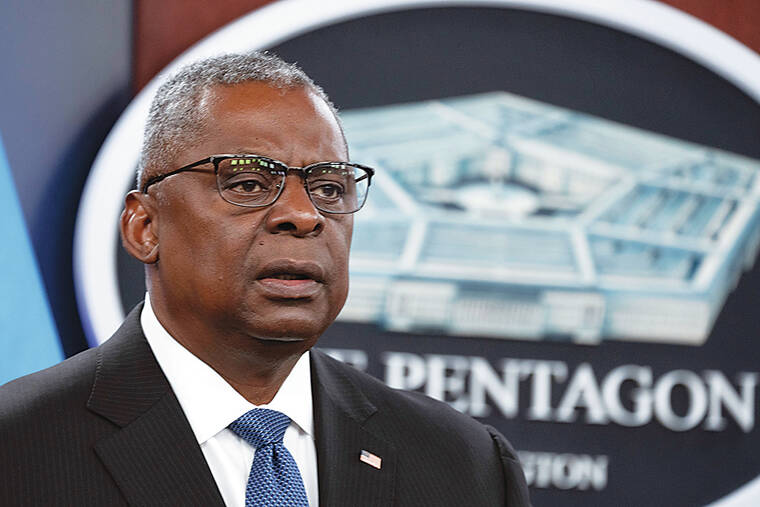US soldier who fled to North Korea was facing disciplinary action after time in South Korean prison
SEOUL, South Korea — An American soldier facing military disciplinary actions fled across the heavily armed border from South Korea into North Korea, U.S. officials said Tuesday, becoming the first American detained in the North in nearly five years.
Two U.S. officials said the soldier detained was Pvt. 2nd Class Travis King, who had just been released from a South Korean prison where he’d been held on assault charges and was facing additional military disciplinary actions in the United States.
King, who’s in his early 20s, was escorted to the airport to be returned to Fort Bliss, Texas, but instead of getting on the plane he left and joined a tour of the Korean border village of Panmunjom, where he ran across the border.
At a Pentagon press conference Tuesday, Defense Secretary Lloyd Austin did not name King, but confirmed that a U.S. service member was likely now in North Korean custody.
“We’re closely monitoring and investigating the situation and working to notify the soldier’s next of kin,” Austin said, noting he was foremost concerned about the troop’s wellbeing. “This will develop in the next several days and hours, and we’ll keep you posted.”
Details about King, including his hometown and what additional charges he faced, were not immediately available. It was also unclear how he managed to leave the airport while he was being escorted.
The American-led U.N. Command said he is believed to be in North Korean custody and the command is working with its North Korean counterparts to resolve the incident.
North Korea’s state media didn’t immediately report on the border crossing.
Cases of Americans or South Koreans defecting to North Korea are rare, though more than 30,000 North Koreans have fled to South Korea to avoid political oppression and economic difficulties since the end of the 1950-53 Korean War.
Panmunjom, located inside the 248-kilometer-long (154-mile) Demilitarized Zone, has been jointly overseen by the U.N. Command and North Korea since its creation at the close of the Korean War. Bloodshed and gunfire have occasionally occurred there, but it has also been a venue for numerous talks and is a popular tourist spot.
Known for its blue huts straddling concrete slabs that form the demarcation line, Panmunjom draws visitors from both sides who want to see the Cold War’s last frontier.
No civilians live at Panmunjom. In the past, North and South Korean soldiers faced off within meters (yards) of each other.
Panmunjom also is where the armistice that ended the Korean War was signed. That armistice has yet to be replaced with a peace treaty, leaving the Korean Peninsula technically in a state of war. The United States still stations about 28,000 troops in South Korea.


